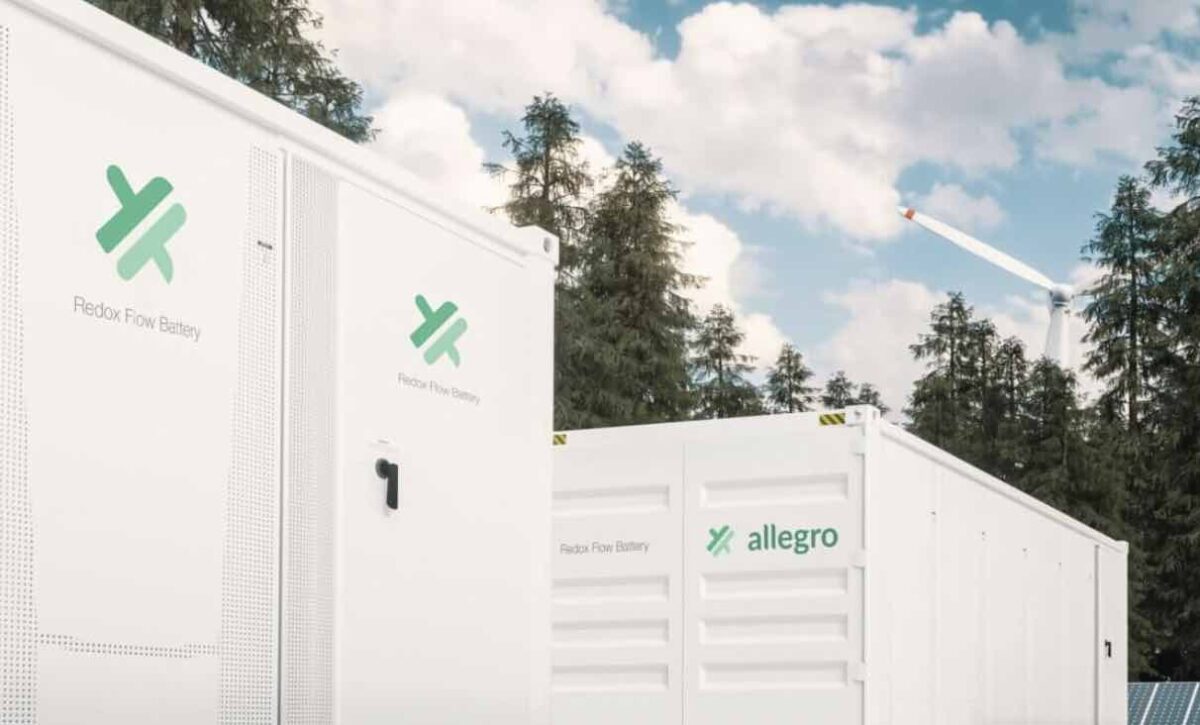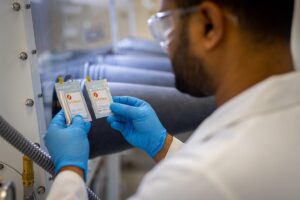It has to be said that Origin Energy hasn’t enjoyed great success in investing in new energy technologies.
Its plunge into “hot rock” geothermal technology and hopes for green baseload power more than a decade ago ended in failure with the admission that the chemistry was difficult so deep underground and it was going to be too expensive. Losses totalled more than $200 million.
Its bold push into solar PV through Sliver also ended in disappointment. A solar tech that boasted of using less silicon didn’t look quite so attractive once the price of silicon had plunged and Chinese manufacturers had slashed the cost of PV production. Origin’s losses from that venture were more than $150 million.
So there were a few raised eyebrows this week when Origin emerged with another investment in a novel technology, this time in a little known energy storage company called Allegro Energy that has developed its own redox flow battery.
The financial commitment is not huge – $4 million for a five per cent stake in the company – but the optics are significant: A trial for a 12-hour battery to be conducted at the country’s biggest coal generator, Eraring, that Origin has flagged it will close in late 2025.
Battery storage has been making a big splash in recent weeks, with one big project announced after another, including the first to be built at the site of a former coal plant (Hazelwood), and two massive projects to be built at the coal centre at Collie in Western Australia.
This week Genex says it has energised its firs big battery at Bouldercombe, and BlackRock landed more than $500 million in equity for the Waratah Super Battery, another installation designed to fill the gap created by the closure of Eraring, along with Origin’s own massive lithium ion battery at that site.
The battery projects are getting bigger, and the storage duration is getting longer – moving from the one hour needed for frequency control and other grid services, to two and four hours – and in one case eight hours – to shift the output of renewables, particularly solar, to times of peak demand in the evening.
But that amount of storage is still not seen as enough to fill in the anticipated gaps of a grid dominated by wind and solar. Lithium batteries might be good for shifting solar from the middle of the day to the evening, less so fo filling in overnight or day or days-long gaps.
And with pumped hydro proving difficult, costly and time consuming to build, the co-founder and CEO of Allegro, Professor Thomas Nann, says flow batteries and the 12 hours storage they offer are perfect to fill those key gaps in the green energy transition.
Flow batteries have been around for half a century, and the first vanadium redox flow battery was invented in Australia at the University of New South Wales in the 1980s.
To explain how they work, Nann likes to compare them to a car.
“So in a car, you’ve got an engine and the tank, and the engine of the car is pretty much responsible for how fast you can go, how fast you can accelerate, and the tank where the fuel is being stored determines how far you can go,” Nann tells the latest episode of the Energy Insiders podcast.
“Now in technical terms, that is called power and energy. In classical lithium ion batteries, or pretty much any battery in that format, this ratio is fixed because you can get only that much “fuel” into the battery.
“In a lithium ion battery this ratio typically allows a duration of four hours. Now in redox flow batteries these two metrics are separate.
“In flow batteries, there is a separation between the power and the energy part (like in cars). And what that means in practice is that with this type of battery you can extend the duration of the storage very easily without having to change the power.
“So this ratio of power and energy is not fixed in these batteries. And that is the reason why they they are so well suited for long duration storage.”
What makes Allegro’s technology interesting is the proprietary electrolyte that can be adapted to multiple different chemistries.
The breakthrough came around six or seven years ago from his team at the Victoria University of Wellington in New Zealand, with the discovery of a new electrolyte, which gives it a choice of different chemistries.
“We took a very different approach. So rather than locking in a certain chemistry and work around that, we screened hundreds of different types of chemistries,” Nann says. “And then we select the ones that perform best with without showing many of the problems that other battery types have in the first place.
“We very deliberately only looked at materials that are already available at very large scale. So what that means is, we don’t have to build a chemical factory to make some fancy molecule for our battery, we can buy everything off the shelf, pretty much.
“And that is that is a huge cost advantage that we are having over many other approaches.”
So will it work at commercial scale and at competitive costs? We will soon find out.
Allegro is to install its first commercial scale module at Eraring. This will be for trial purposes only, and will be sized at just 100kW and 800kWh, but Origin is already talking about building a 5MW, 12 hour battery (60MWh), either at Eraring or another of its generation sites.
Origin also has the option of investing more in Allegro. Ironically, one of the other key shareholders is the ASX-listed ReNu, which used to be known as Geodynamics, and which holds a 4.7 per cent stake it bought 18 months ago for $450,000.
Origin may also help fund the “giga-factory” that Nann hopes to build near Newcastle to help meet demand for the Technology, which he expects to increase dramatically, particularly as pumped hydro proves so hard to deliver. Nann is head of the School of Mathematical and Physical Sciences at the University of Newcastle.
Nann says Origin has done its due diligence, and it’s not the only utility interested in this technology, which not only provides long duration storage, but is fully recyclable and uses no hazardous chemicals.
He points to a recent report from McKinsey that predicts the long duration storage market will be worth $3.5 trillion. That’s a big space for the flow batteries to play in.
You can listen to the full interview with Professor Thomas Nann in the latest episode of the Energy Insiders podcast here.










